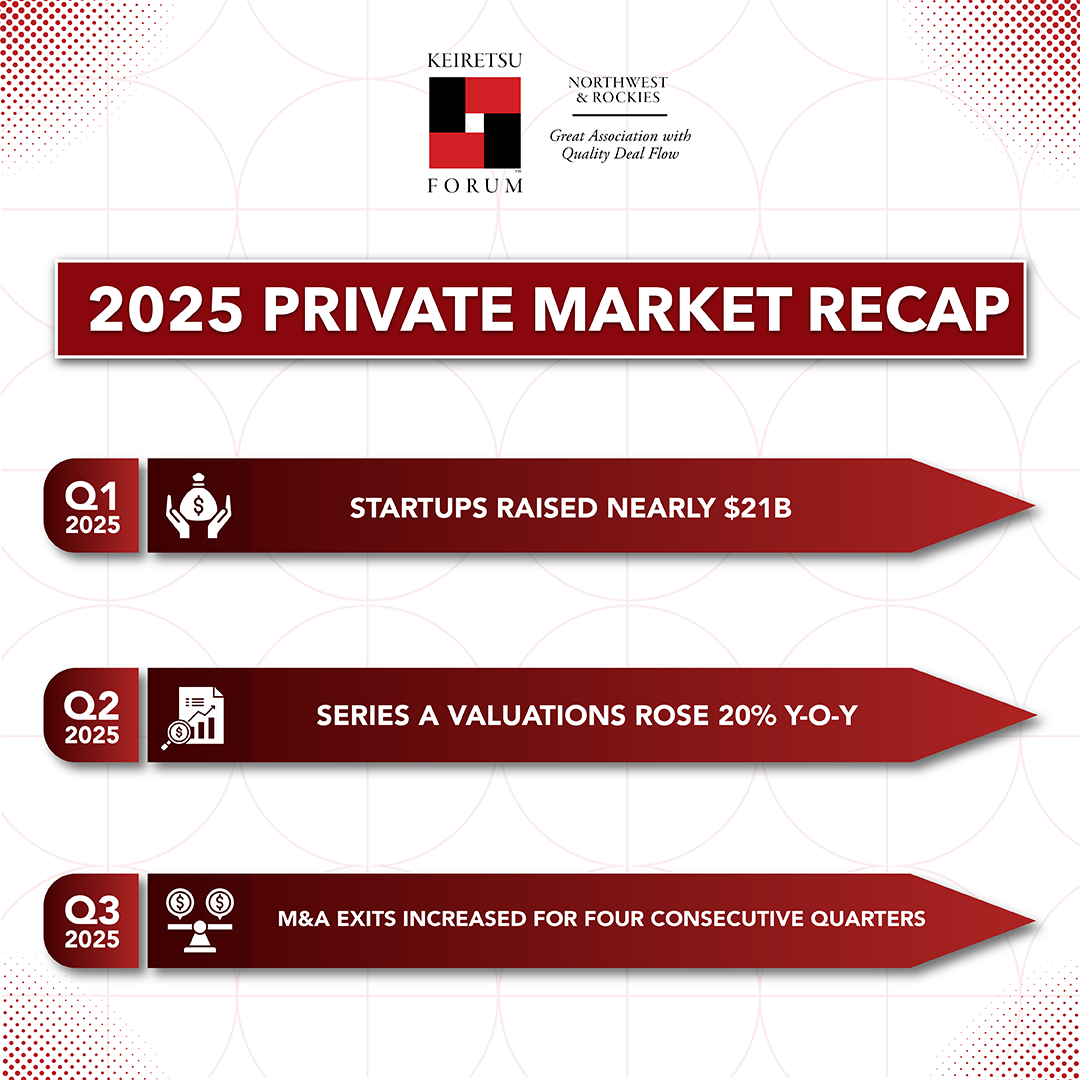
The public markets roar. The private markets whisper. But if you listen closely, Q4 2025 promises to be the quarter where the whisper turns into a pulse. One that will set the tone for years to come.
As an angel investor, your edge lies in anticipating inflection points. What we’ve seen in Q1–Q3 via Carta’s data offers a roadmap: capital is consolidating, skepticism is rising, and only the sharpest bets will break through the noise.
We looked back at the year so far, and it seems that Q4 2025 won’t be about survival; it will be about selection. The angels who double down on diligence, specificity, and optionality will write their own generational returns. Let’s explore why.
The Story So Far: Carta’s Q1-Q3 Snapshot
Throughout Q1, Q2, and Q3 2025, Carta’s dataset has chronicled a persistent narrative: fewer deals, fatter valuations, and a marked selectiveness among investors. In Q1, businesses raised nearly $21 billion across just 1,122 rounds, the lowest quarterly deal count since 2018, with the median seed valuation jumping 18% year-over-year to $16 million and Series A surging to $48 million, up 9%. Yet, deal volume plunged, a 28% drop in seed rounds and a 10% dip in Series A, as investors hunted for quality over quantity.
Q2 extended these trends, with more deals but smaller checks. Average round sizes shrank 3–9% from Series A to D, but early-stage valuations kept climbing. Series A valuations rose 20% YoY, median time between rounds stretched to nearly two years, and SaaS and hardware sectors powered funding growth, with SaaS up 91% and hardware up 110% in two years. Angels watched as runway discipline became paramount.
By Q3, the private market found a curious steadiness between $15.7 billion and $23.8 billion raised per quarter, echoing pre-pandemic levels. Seed and Series A deal counts slipped further, down by 22% and 26%, respectively. Still, median valuations at these stages trended ever upward, reaching record highs for those able to clear high investor bars. Later stages heated up: Series D rounds hit a two-year peak, and the number of businesses exiting via M&A ramped up for the fourth straight quarter, offering a much-needed liquidity path.
The Early-Stage Paradox: Less Cash, Higher Bar
For angels, Q4’s early-stage landscape will continue to prove discerning. Deal counts are likely to remain suppressed, with less cash chasing a pool of entrepreneurs who demonstrate real traction and discipline. The average wait between rounds at Series B recently hit 2.8 years, and with Series A and seed rounds gathering momentum only for best-in-class companies, investors must expect fierce competition for access to strong deals. Lower dilution is a new norm; median dilution in Series A dropped to 17.9% from 20.9% the prior year, signaling entrepreneurs now command more equity per round.
Yet not all is gloom. The select companies that bring investment are enjoying a “valuations arms race.” Q3 data finds the median pre-money valuation for seed rounds at $14.9 million and Series A at $45 million - both near their highest points this decade. This is classic flight-to-quality; you should anticipate Q4 to showcase the kind of discipline and competitive pricing that define a mature, resilient market.
Mid-to-Late Stage: Catching the Liquidity Wave
Series B and later-stage deals are rebounding. In Q3, Series B fundraising topped $5 billion for the first time in five quarters; deal counts rose nearly 23% year-over-year, and Series D clocked 43 rounds, the highest in recent memory. Dilution at these stages is falling, and bridge rounds, once essential for early-stage survival, are less common in Series C and above.
Perhaps most importantly, mergers and acquisitions are surging. Q3 saw 170 M&A transactions, the highest in over two years, and this trend is expected to crescendo in Q4 as companies seek liquidity outside the still-shuttered IPO window. For angels, the implication is clear: exits will increasingly come via buyouts, not public markets.
Geographical and Sector Shakeup
Location drives capital. California remains the undisputed heavyweight, responsible for over half of all venture capital raised on Carta. But southern states and key metros like New York, Boston, Los Angeles, and Austin are claiming bigger slices of the pie, with the South’s share climbing to 17% this quarter. The Bay Area’s SaaS titans and Boston’s healthtech leaders command fundraising momentum; Los Angeles sees hardware in the funding spotlight.
On a sector level, SaaS dominates, with deeptech, healthtech, and hardware fast followers. If you are chasing outsized returns, you should closely track these hotspots through the end of the year.
What Will Q4 Bring? Predictions and Calls to Action
Here is how Q4 is likely to shape up for US angel investors:
- Early-stage selectivity will intensify: Expect continued low deal counts but record valuations for top candidates. Angels must act swiftly and smartly, but there’s a lot of benefit from reduced dilution.
- Late-stage activity and exits revive: Series B, D, and beyond will see higher deal volumes, while M&A-driven liquidity gives angels more predictable exit timelines.
- Geographical and sector gains: Investors should favor California, but opportunistic bets in the South, New York, Boston, and hardware/SaaS sectors could outperform.
- Bridge rounds normalize: Fewer emergency extensions and more regular, disciplined pricing, especially past Series A, signal market healing.
- Deal terms shift toward entrepreneurs: Standard terms now favor liquidation preferences over participating preferred, showing more balanced negotiations.
Opportunity Awaits, But Discipline Rules
Q4 2025 demands laser focus. For those who embrace data-driven diligence, evaluate deals with discipline, and build relationships in strategic sectors and regions, the forthcoming quarter offers historic opportunities. The private market’s return to consistency, paired with select surges in valuation and liquidity, means the angels willing to adapt will write the next chapter of success.


